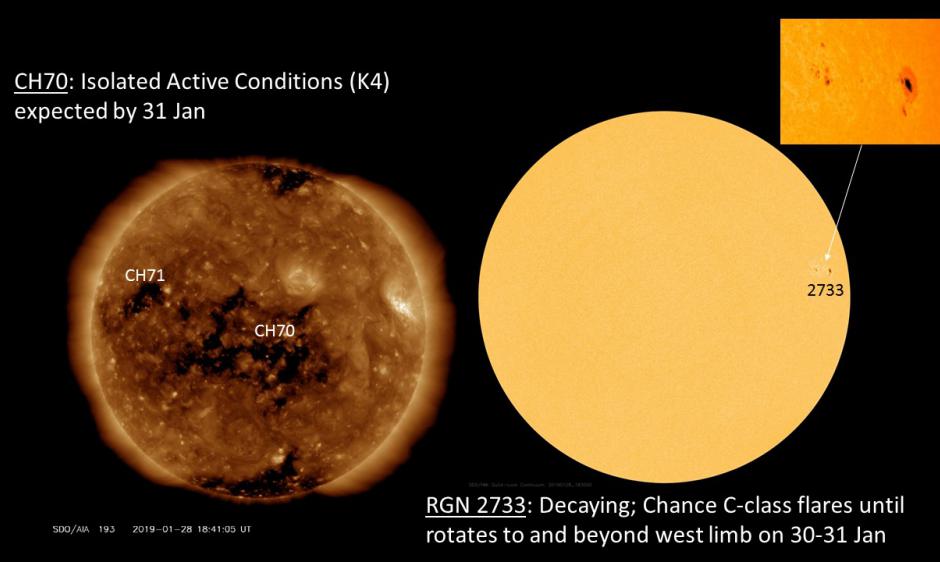
A coronal hole (CH) assigned as CH70 is anticipated to rotate into an Earth-influential position by the January 31st UTC-day. Current expectations are for a co-rotating interaction region (CIR) to arrive by 31 January, followed by onset of the CH high speed stream (HSS). The current forecast calls for the overall planetary geomagnetic response to reach a few isolated periods of Active (K4) conditions on 31 January. Elevated solar wind speed is expected to continue into 1 February, so keep checking our SWPC website for the latest updates, forecasts, watches, and warnings with regards to CH HSS influences and expectations. Meanwhile, a spot group emerged last week and underwent periods of decay and maturation; however, its overall trend over the past several days was growth. It produced a C5 flare on 26 January (1322 UTC / 0822 ET). The trend of the spot group over the last 24 hours has been slow decay and it will also begin rotating out of Earth-view on 30 January. Between its more recent slow trend of dissipation and its eventual rotation out of Earth-view, C-class flare chances are forecast to decrease over the next 3 days.